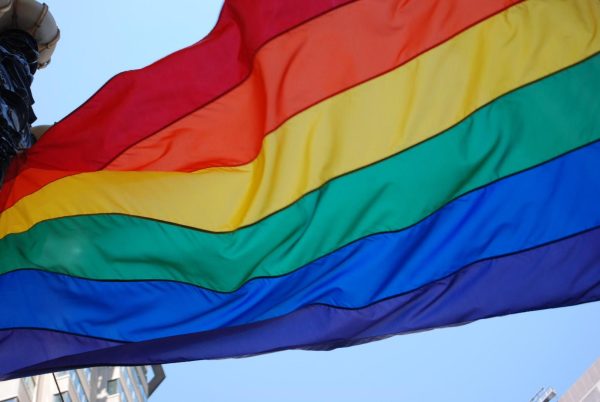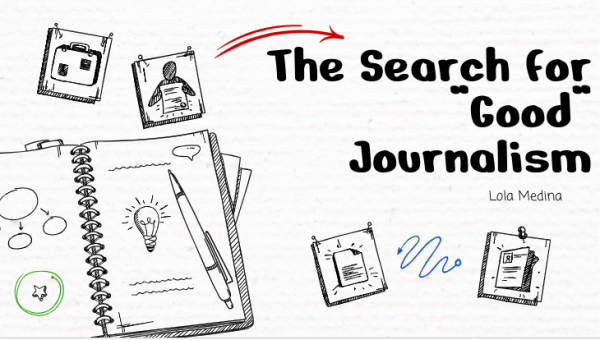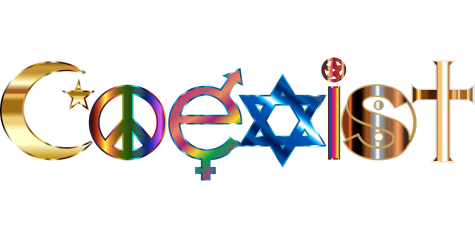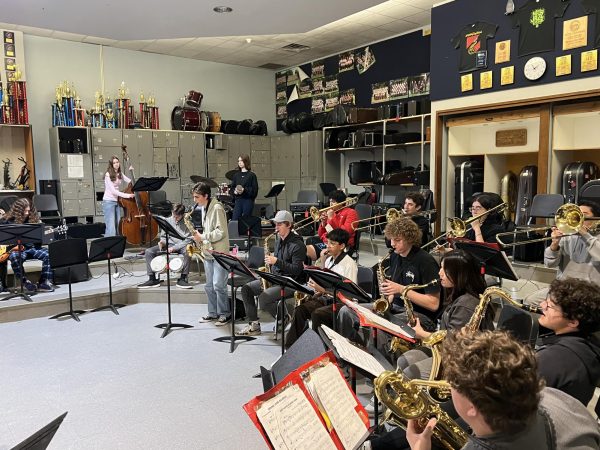Should we re-elect, recall, or at least review the electoral college?
The Sentinel’s Gabriella Toranski explores background, history, controversy, intention, election trivia, and an alternative to the electoral college as a process for declaring the presidency
Washington Post: Edison Research/Associated Press
Controversy abounds over the use of the electoral college as well as the alternative in deciding presidential elections. This map of the 2020 presidential election results shows in red the states whose electoral votes went to incumbent Republican candidate President Donald Trump and states in blue whose votes went to challenger and former Vice President Joe Biden. At 306 to 232, Biden became the 46th president.
Every four years, the United States of America becomes unrecognizable. Although the country has always been tumultuous around politics, the presidential election creates a completely different climate.
Rallies hosted by presidential candidates take place in cities across various states in an attempt to garner greater support. Millions view heated debates in which hopeful politicians tear apart each other’s plans while also advertising their own ideas. News sources in the U.S. churn out articles about the topic, seemingly disposing of any other excitable stories from their agenda. Dinner tables in American households consist of chatter about whose policies are more beneficial for the working class. Even schools are unable to shy away from the subject, with children reiterating facts and opinions imprinted by their parents and teachers concocting lesson plans to explain how the election process works to their students.
Though every election rekindles arguments about the electoral college, the 2020 election played an important role in the importance of smoothing out issues in presidential races. Tensions are constantly reaching new heights in politics, but the battle between Joe Biden and Donald Trump proved to be fiercer than ever before. False claims that the election was “stolen” from Trump spread like wildfire throughout the country, despite the claim being rejected by more than 60 court filings including the U.S. Supreme Court, leading to an insurrection of the Capitol by supporters of the incumbent. Now more than ever, it is of utmost importance to analyze the value and moral standpoints of the electoral college.
In an American election, candidates tirelessly battle for a spot on the ballot, using as many tactics as they can. They accept offers for a vast amount of interviews, fundraise for their cause, and spend large amounts of money on short commercials to be aired across platforms such as YouTube.
Eventually, after each state has held a primary election to narrow to a democratic and republican candidate, one person is chosen for each of the two major political parties during their national conventions.
Campaigning continues for a great deal of time until Election Day, in which eligible citizens cast their votes. The nominee who wins the popular vote in each state will win that state’s number of electoral votes, which are based on its population. Electors, who are people with some level of influence in politics and have an affiliation with the winner’s political party, will then assemble to cast an official vote on who will become the next president of the United States of America. To be declared the winner, a minimum of 270 votes is required.
The electoral college, however, is not a perfect system. Although nothing can truly be ideal, especially in the political world, this method may be too flawed to try to salvage. Many argue that the electoral college is not an accurate depiction of the choices the American people make when voting for a president. Indeed, this idea is supported with great clarity when examining past elections in which a candidate captured the popular vote but failed to garner the needed electoral votes:
- 2016 – Hillary Clinton (D) won the popular vote against Donald Trump (R) by 2,868,519 ballots, according to The New York Times– that’s a percentage of 48% to 45.9%. However, Clinton lost to Trump in the electoral college with her 232 to his 306 votes.
- 2000 – The Associated Press explains that in 2000, Al Gore (D) won the popular vote against George W. Bush (R) by over 500,000 ballots. Despite this, Bush held the majority in the electoral college, with 271 votes to 266. This election proved to be abnormal, however, when the electoral college votes were incredibly close, eventually leaving it all in the hands of Florida. Votes were recounted after controversy regarding markings on certain ballots. The U.S. Supreme Court intervened and ruled that Bush had won, effectively interrupting the recount.
- 1888 – The Associated Press explains that in the 1888 election, incumbent Grover Cleveland (D) won the popular vote by over 90,000 votes; however Benjamin Harrison (R) won the electoral vote at 233, compared to Cleveland’s 168, allowing Harrison to earn the title of president.
- 1876 – Another interesting and slightly different case of someone who lost the election despite winning the popular vote was exemplified in 1876. According to the Associated Press, Samuel Tilden (D) won the popular vote against Rutherford B. Hayes (R) by over 200,000 votes. At that point in time, the minimum number of electoral votes required to win was 185. Tilden received more electoral votes than Hayes (184 to 165), but because of disputed votes in various states, he did not have enough to win the election. The case was sent to Congress, which created a commission of people from both parties. Eventually, Hayes was declared the winner.
Beyond the numbers that show the electoral college’s responsibility in choosing a winner, there is a question of morality that must be asked: Why should political representatives choose for the entire country? They are an elite group who, arguably, have shown their true colors in regards to their level of trust with democracy. When one sample of the country that lives a different life than most is chosen to pick a leader for us, it becomes difficult to trust if their decisions are an accurate reflection of what the people want.
That being said, of 46 presidential elections, most that have taken place have had results in which the president elect was victorious with both the popular vote and the electoral college.
The Nov. 3, 2020 election is the most recent example of this. Joe Biden (D) confirmed his win against incumbent Donald Trump (R) on Monday, Dec. 14 through the electoral college with 306 votes to 232. Beyond that, he also received the greatest number of votes ever casted for a presidential nominee on Election Day with 80 million votes, according to CNN.
A few other examples of presidents who won the electoral and popular vote according to 270 to Win are:
- 2012 – Incumbent Barack Obama (D) won against opponent Mitt Romney (R) with 332 electoral votes and almost 66 million popular votes.
- 1984 – Ronald Reagan (R) won against opponent incumbent Jimmy Carter (D) with 489 electoral votes and almost 44 million popular votes.
- 1968 – Richard Nixon (R) began his first term with a win against opponent Hubert Humphrey (D) with 301 electoral votes and over 31 million popular votes
- 1936 – Incumbent Franklin Roosevelt (D) won against opponent Alfred Landon (R) with 523 electoral votes and over 27 million popular votes.
Although the 2020 election, and many others before, was a win for the president-elect in both fields, there is no guarantee that such a feat will be repeated in future years. The recent election was incredibly stressful for both political parties. FiveThirtyEight, a poll and analytics site focusing on politics and sports, projected who would win the election by simulating the election “40,000 times to see who wins most often.”
What came out of this experiment was a result that heavily favored Biden with an 89 out of 100 chance of winning compared to Trump’s 10 out of 100. The remaining chance was cast towards the possibility that the results would be close enough to where it would be considered a tie and appropriate actions would have to ensue. Albeit confidence boosting for Democrats at first glance, there were obstacles that were strewn about on Election Day. Swing states, which are states that have no definite preference for a party and often “swing” back and forth over years between Republican and Democratic, were more unpredictable than expected. Pennsylvania, for example, favored Trump for a lot of the election night, but eventually the state was declared blue. Georgia was an incredibly tight race, as well. Like Pennsylvania, Georgia was leaning red before eventually being declared in favor of Biden. According to the Washington Post, Biden garnered 2,473,633 popular votes in Georgia, while Trump received 2,461,854 votes, which is 49.5% to 49.3%. It was so close, in fact, that multiple recounts followed. Had the electoral college not been put in place, doesn’t it seem likely that these issues would not have manifested?
Although concerns were raised this election year and debate heightened, it is important to note that the electoral college is not new to controversy. In fact, the very foundation in which it was built upon is at issue.
Slavery, which is forever embedded in our country’s history, still haunts us today. The electoral college, which we must revisit every four years, is a prime example of that. Unfortunately, it has become apparent that the founding fathers’ words of equality for all did not get imprinted in their creation of the electoral college. Before understanding how slavery is intertwined with the system, however, it is important to understand how the framers of chose the electoral college in the first place.
As per CNN, the framers were quite torn on how to elect a president. Some believed that it would be ideal if Congress was in charge of deciding, while others favored a popular vote, which is clearly still argued today. However, the framers of the Constitution felt as though the general population would not be educated enough to make a fully formed opinion and eventually cast a ballot. In order to meet in the middle, the electoral college was chosen.
Slavery, which had already garnered attention for its immorality, further complicated the fight for the newly formed electoral college. Because the electoral college relies on the population of states, the framers needed to figure out how exactly they should count people. Would slaves be considered when determining the population of the states? According to the Constitutional Accountability Center in Washington, D.C., the North and those who were general abolitionists, believed that only those who were free should be counted. The South argued that slaves should be counted too, as this would give the South more seats in Congress and a greater number of electoral votes. As The Atlantic points out, the two groups decided to meet in the middle through The Three-Fifths Compromise, in which slaves only counted as three-fifths of a person. And yet, these slaves were unable to vote.
It is apparent that the electoral college is flawed, stemming from the 1800s and continuing on into today. Perhaps it is time to replace it with the increasingly favored popular vote. In fact, the Washington Post states that 61% of Americans (the majority of whom identify with the Democratic Party) would like to see an overhaul of the electoral process, with the popular vote being put into place. But is the popular vote all that it’s cracked up to be?
The Washington Post notes that the electoral college forces candidates to campaign everywhere. In order to make their mark and bring in more supporters, candidates must make sure that rural states have as much momentum with their cause as they do with bigger states. With the popular vote, it would be more tempting, and smarter even, to only campaign in large cities. If a candidate can garner the majority of support from, say, New York City, they simply do not need the few hundred votes from a small town in Kansas, for example.
While it may have seemed like a no-brainer as to which electing method should be implemented at first, perhaps this article has clouded your vision. Maybe you felt as though the popular vote was ideal, but with the statistics laid out in front of you, you’re not as convinced as you were before.
Or, on the flip side, the electoral college felt like the perfect choice, but you’ve changed your view after looking at it closer. It is possible that you are stuck in the middle. You really cannot decide for yourself as to what is wrong and what is right, and that’s completely fine. In politics, and in life in general, we are often forced to pick left or right, up or down, this or that. We are not given room to be conflicted, to not have a preference, to be indecisive. It is normal to feel confused, especially on topics that are as complicated as these.
No matter where you stand – on the grounds of keeping electors or becoming your own elector through the popular vote, or maybe even somewhere in between – it is important to be informed, open minded, thoughtful, and respectful when it comes to politics. And remember that change cannot happen overnight. This is a battle the country will be fighting for quite some time until we reach an agreement or compromise.
Are we really voting for our president when we cast a ballot using the electoral college, or are we simply voting for electors? Is the popular vote going to silence voters in smaller towns? With a lot of research, that’s up to each of us to decide.











Susan Anthony • Feb 8, 2021 at 9:30 am
Because of current state-by-state statewide winner-take-all laws for Electoral College votes, not mentioned, much less endorsed, in the Constitution . . .
Only the few states where support for the two parties is almost equally divided are important.
The smallest states and the most rural states, have barely hosted a major general campaign event for a presidential candidate during the last 20 years.
Almost all small and medium-sized states and almost all western, southern, and northeastern states are totally ignored after the conventions.
Our presidential selection system shrinks the sphere of public debate to only a few thousand swing voters in a few states.
The only states that have received any campaign events and any significant ad money have been where the outcome was between 45% and 51% Republican.
In 2000, the Bush campaign, spent more money in the battleground state of Florida to win by 537 popular votes, than it did in 42 other states combined,
adviser • Apr 17, 2021 at 1:22 pm
Thank you for your response – The Sentinel